Written by Alice, BA Compatitive Literature
During lockdown in the UK, I received big news. I was formally diagnosed with autism and dyspraxia, two neurodevelopmental disorders. I had already been diagnosed by my GP and a psychiatrist a year ago, so I was quite sure about the outcome of the long process of the formal diagnosis. It still came as a shock. Maybe that’s what relief feels like, after 20 years of endless appointments, unsuccessful therapies, and multiple stays in hospitals without any answers. Now I have the answer. I can put a label on my struggles, and better understand them.
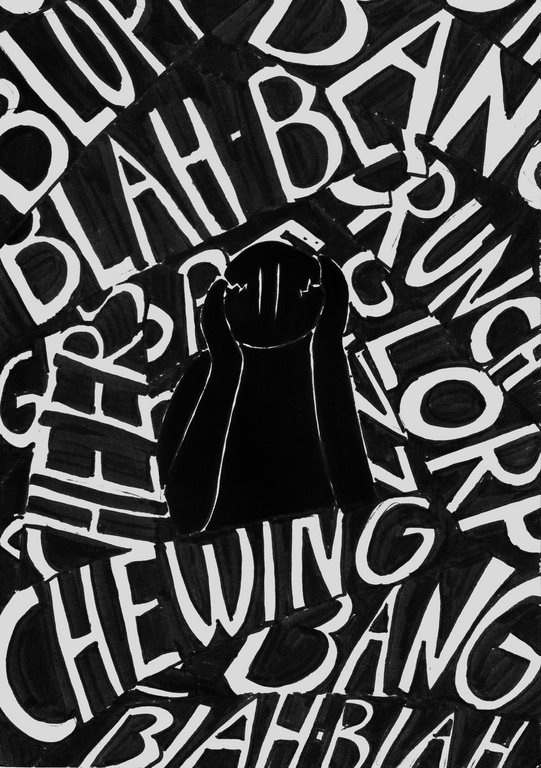
I had a lot of coursework when I received confirmation of my diagnosis, but I couldn’t focus, with everything that was happening in the world and in my life. I found a way to procrastinate even more. I went through my old notebooks, journals, and folders and gathered many of my drawings. I always liked drawing when I am anxious, bored, lonely, scared, happy, tired, excited. I draw to let out my emotions. I think I started drawing because I wanted to express my emotions and share them with someone but had no idea how to.
In the light of my recent diagnosis, I realised that my drawings and sketches had a lot to say about autism and could help me explain the effects of this condition on my life to my family and friends.
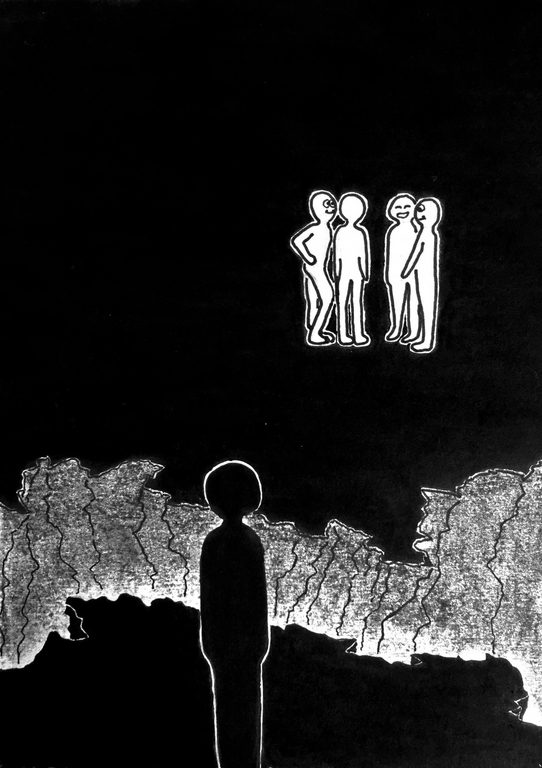
I spread all the sheets of paper on my bed and on the floor of my bedroom. It was a mess. I started classifying and making piles, naming, scanning and organising the hundreds of drawings. I selected my favourites. Sometimes, they were so old that the ink had faded and the paper had become yellow and wavy. I drew some of the drawings again and decided to share them to speak out. I was not looking for fame or compliments. I have no technique, never learned how to draw and only use a black ink pen because I don’t know how to use colours. What I wanted was for other autistic people in my situation, to feel less alone. I was told that women are less likely to be diagnosed with autism because the tools used for diagnosing autistic children are not adapted to female behaviours. When a psychiatrist first mentioned autism, he encouraged me to read a book in which there were dozens of testimonies written by women who were diagnosed with autism in their 20’s and later. For the first time in almost two decades, I did not feel alone. Through these testimonies, I started to accept my diagnosis and decided to act to help the thousands of undiagnosed adults who struggle every day.
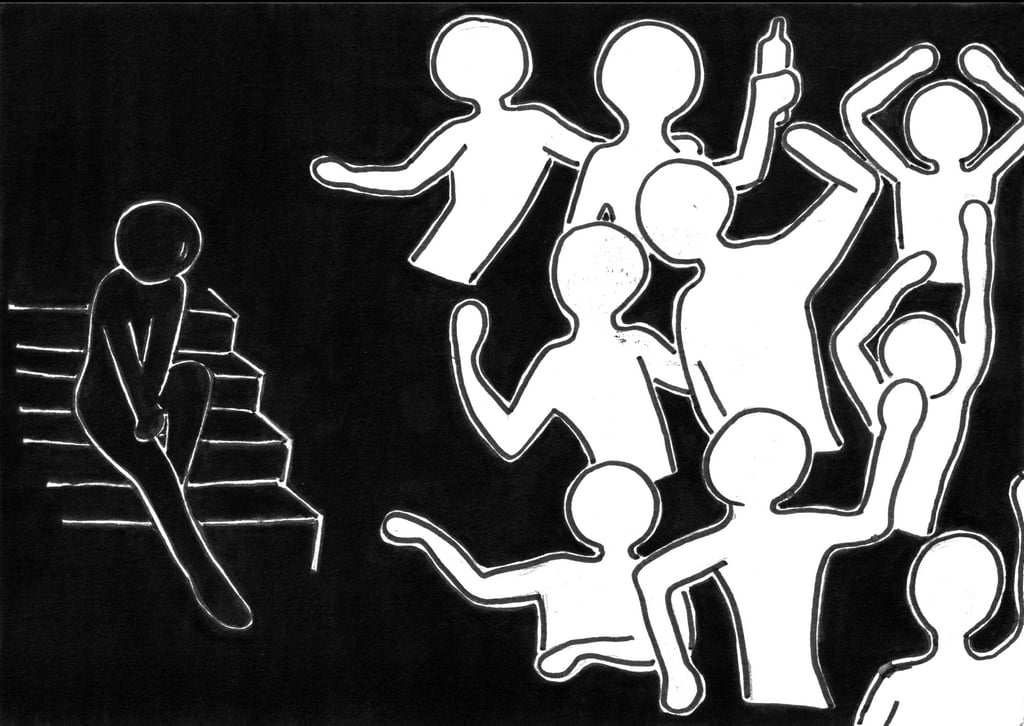
I created a website with several topics about life with autism, such as university, anxiety, friends, relationships, and mental health. I organised my collection of drawings to form a loose narrative about a little autistic character, trying to make her way through life.
My drawings tell the joys and struggles of coming to university with ASD, how hard it is to make friends at uni when you can’t go out, to parties, or places with music. I show how much I struggle to keep up with a conversation if more than one person is speaking or if there is music and how tired I get after interacting with someone for more than an hour. And how having associated conditions such as Prosopagnosia makes it even harder to make friends because I can’t recognise them, or dyspraxia which makes it very hard for me to answer messages on time. I was lucky to meet wonderful people in my accommodation during my first year at UCL. Esther, Théo, Matthew and Sarah, thank you, for being so nice, and for staying my friends even though often decline invitations and leave social events too early, even though I am terrible at answering your messages and worse at answering phone calls.
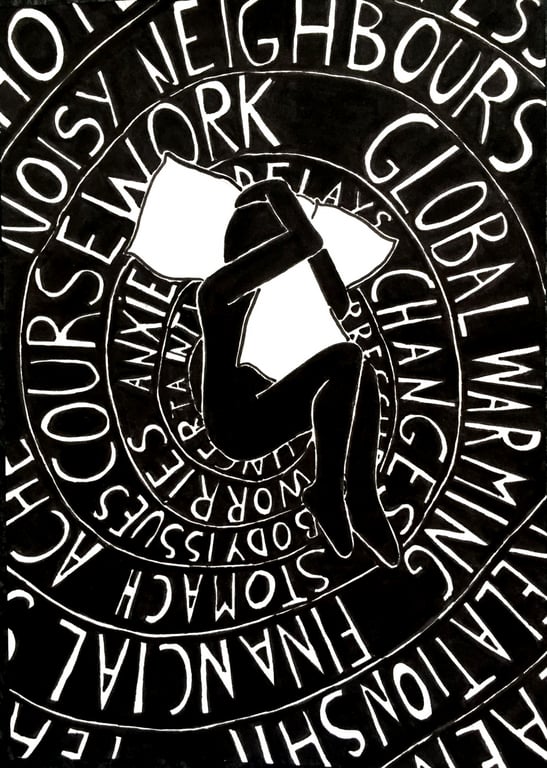
Drawing introduced me to new possibilities of expression. It allowed me to say what I could otherwise not say. It gave me a voice. Whether writing or speaking, words make me feel limited and frustrated. I never seem to find the words that mean what I want to say as if there were no words to speak about emotions and feelings. If studying Comparative literature taught me one thing, it is that I can’t write. Images and drawings the other hand, carry a universal meaning, a language understood by all. I feel freed by the power of expression images give me. I can explain what autism feels like. I can draw my experience of sensory overloads and meltdowns, and show the painful nature of noises and the violence of smells. I can finally express how much I struggle when I interact with people, how difficult it is for me to go parties and social events organised by societies, how anxious I am when there is a change of plan, and my deep distress at the grocery store.
I found drawings more straightforward than long speeches when it comes to explaining what it feels like to be autistic. Because images seem to be more striking than words, easier to understand, and because my autistic traits are not easily detectable.
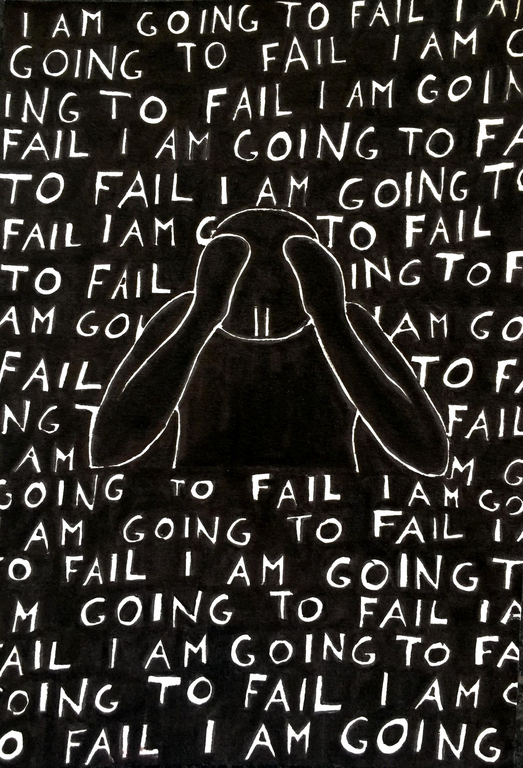
I kept drawing during the summer, almost compulsively. I felt freed and so happy to finally be able to explain what it feels like to be different and finally be understood. Through drawings, people can think and see through my senses and my eyes. They put themselves in my place and try, for a moment, to understand the world from an autistic perspective. Unlike words, drawing allows me to depict and narrate my experiences as an autistic child and young adult in an emotional and unsanitized way, without the pressures of making politically correct sentences and using literary language.
I channelled in these drawings, all the things I wanted to say and explain, everything I wanted to share with people but couldn’t because I could not find the words. This website and my drawings are a new way of communication, a new language through which I can finally express my feelings and be understood. I am glad I created this website and spent the summer drawing instead of writing my essays. I am hoping to open up the dialogue about invisible disabilities, and hope that one day I’ll never have to hear again that I “don’t look autistic”. Many disabilities are not obvious, or visible, but that does not mean that we are not exhausted to struggle in silence, that does not mean that they are not real. I am now the coordinator Autistic Peer Group (APG) at UCL. Do not hesitate to get in touch with me at uclmar3@ucl.ac.uk if have ASD would like to know more about our community.